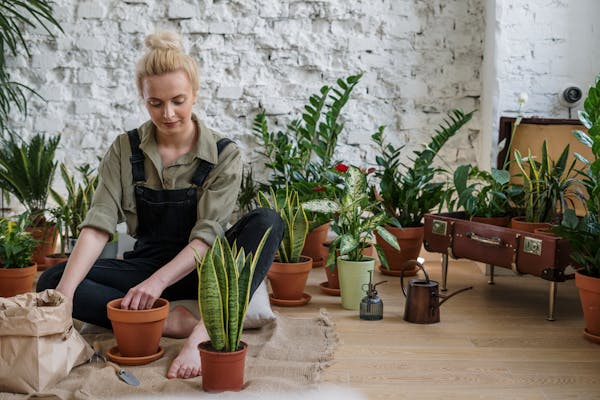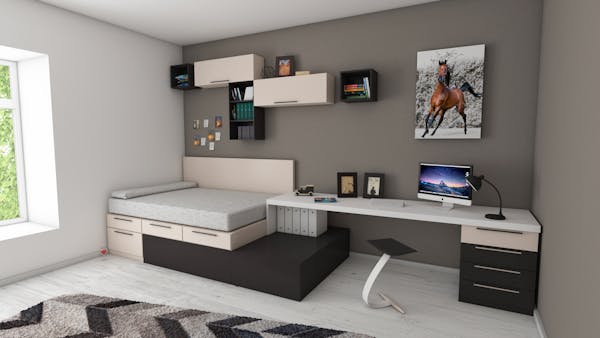Indoor Organic Gardening Made Easy
Indoor organic gardening is not just for the skilled gardener with a huge set up of grow lights and other hydroponic systems. Just about anyone can grow fruit, vegetables, and assorted greens in their home; all they really need is a sunny window. Many gardeners are under the mistaken impression that the end of the summer growing season means the end of gardening until spring arrives next year. However, with a few simply indoor gardening tips, you will soon be growing a number of fun plants all from the inside of your home.
No Garden, No Balcony, No Way?
Not only will indoor organic gardening help you to extend your growing season well into the cooler months, but it can also help those of you without a large garden to benefit from the goodness of growing your own produce.
Apartment dwellers have maintained for years that it simply isn’t possible to grow anything in an apartment. Even if you do not have an outdoor space in the form of a balcony, you will still be able to grow an assortment of plants. If you are lucky enough to have a balcony then you can spread your high-rise gardening into your outdoor spaces to maximize your use of the space.
It is not only possible to maintain an organic garden indoors, but it is fun and easy too.
Tools For Getting Started
Getting your indoor organic gardening project started off on the right green foot is an important part of ensuring your overall success. Gardeners should start with basic materials that are of a good quality; finding budget-friendly products is a good idea, but scrimping on quality can be detrimental to the health of your organic garden.
- Containers: Your indoor organic gardening project should start with the right containers. For the best results, pick out a selection of containers in different sizes. The color and material shouldn’t really make much of a difference. However, there are many retailers that offer organically made potting containers that can help to get your organic garden started right. It is important to match the size of the container to the size of the plant when it will be mature; some plants may be stunted by the lack of space for root expansion.
- Potting Medium: Using a good quality organic potting mix is essential for the health of your plants. Just about any organic garden center, or even your regular garden centers, will be able to provide you with a garden soil that is a good mix of everything that your plants will need.
- Composting: You can certainly purchase bags of organic compost that will provide your plants with good nutrients. However, consider investing in a small indoor composter that fits under your sink. Simply pop in your items to be composted and let the miracle of composting do its magic. Odor free and a source of fantastic nutrients for your plants, making your own compost is not a decision that you will regret.
- Light: The most important part of any indoor organic gardening project is the light that you can offer to your plants. A window that receives at least 6 hours of sunlight a day is the ideal spot for your green growing goodies. Consider, however, the small investment of a growing light bulb. For less than what you would pay for a package of salad greens in the grocery store, you can purchase a light bulb that fits into any standard lamp. Providing your plants with that extra light boost that they need, especially in the darker winter months, this could just mean the difference between a small harvest and a bounty of a harvest.
What Can Indoor Organic Gardening Produce?
The important thing to understand when you are setting out to purchase your seeds or your seedlings is that what you grow is going to depend entirely on the amount of space that you can devote to your garden. Some plants will simply require more space than it is realistic for an indoor gardener to dedicate, while others are perfectly suited to the limited space that they will have indoors.
- Tomatoes and bell peppers are an ideal choice for the indoor organic gardening novice. Not only are they easy to grow, but they tend to be well-suited for indoor environments when they get the right amount of light.
- Peas, beans, and other legumes are very easy to grow in just about any environment. Provide them with the right amount of light and a small trellis to climb and they will be perfectly content. Remember, however, that peas prefer a much cooler environment than some of your other vegetables will.
- Herbs are generally very easy to grow in containers on a windowsill. Try to plant only herbs that you will find useful to have around for use when cooking, like parsley or oregano.
- Fresh greens like lettuces and spinach can thrive under your care in an indoor environment. Be sure to plant a lot of them because you are certainly going to enjoy their bounty.
Try to avoid growing squash, cucumbers, watermelons, and other types of plants that prefer to spread out. Certainly there are varieties that are well-suited to containers however, they are generally much happier with room to spread out in.
Indoor organic gardening is a great way to hone your green thumb no matter the weather outside. It is also a great way to enjoy organically home-grown fruits and vegetables!








